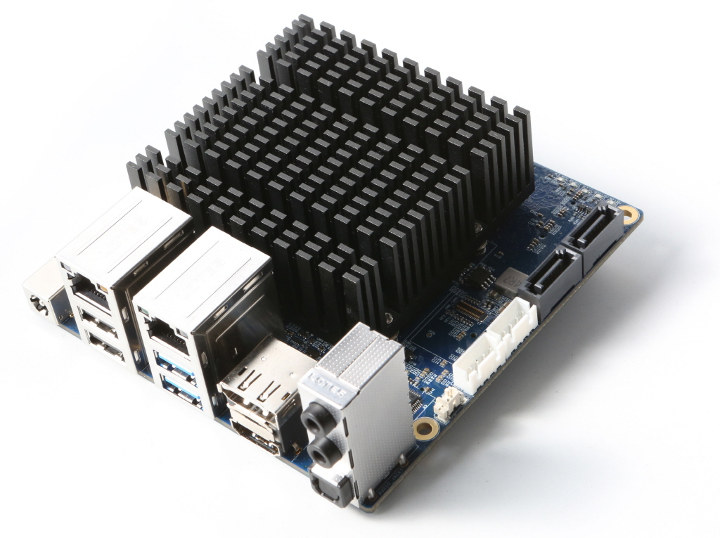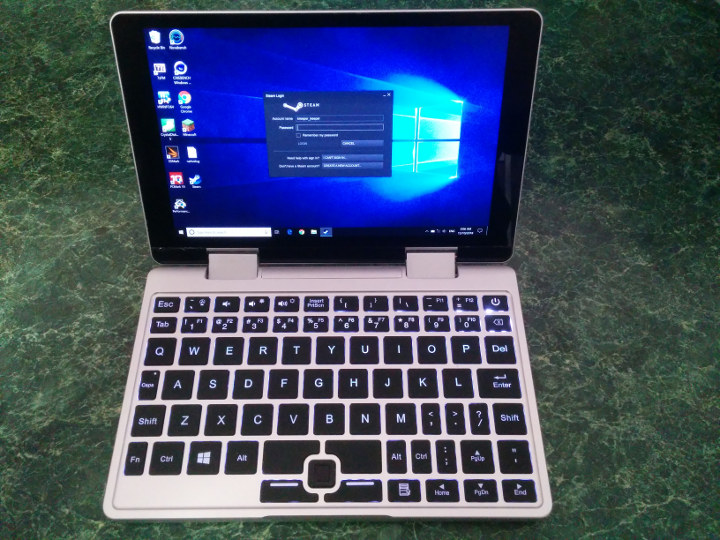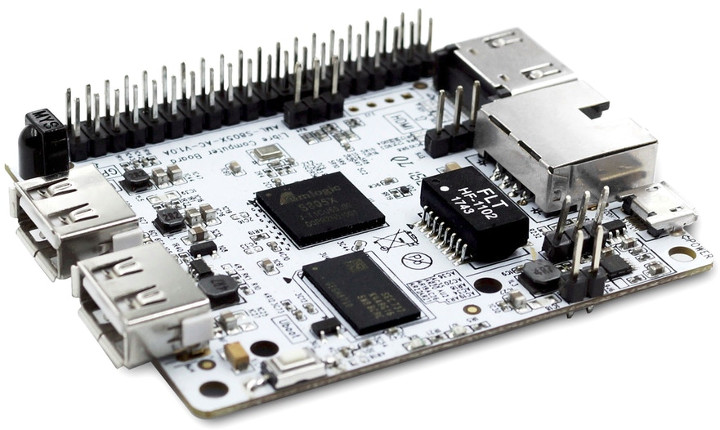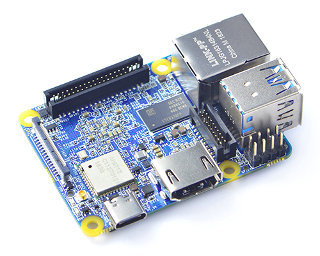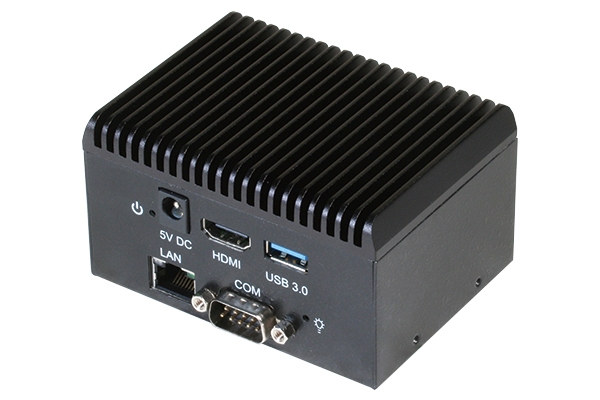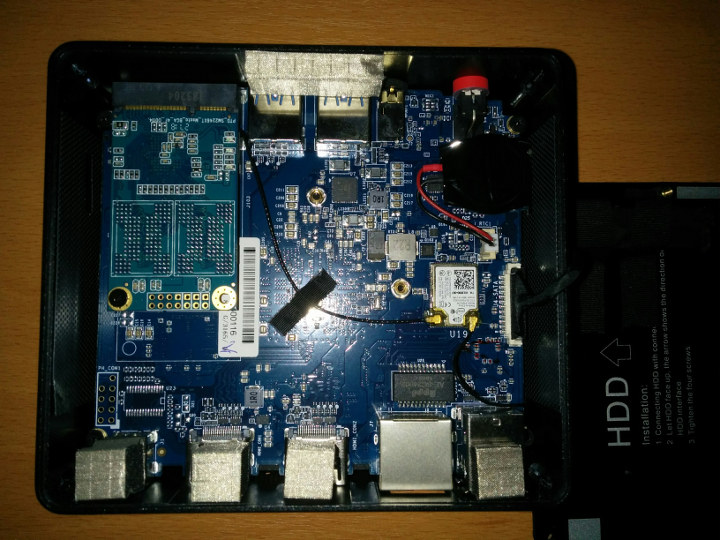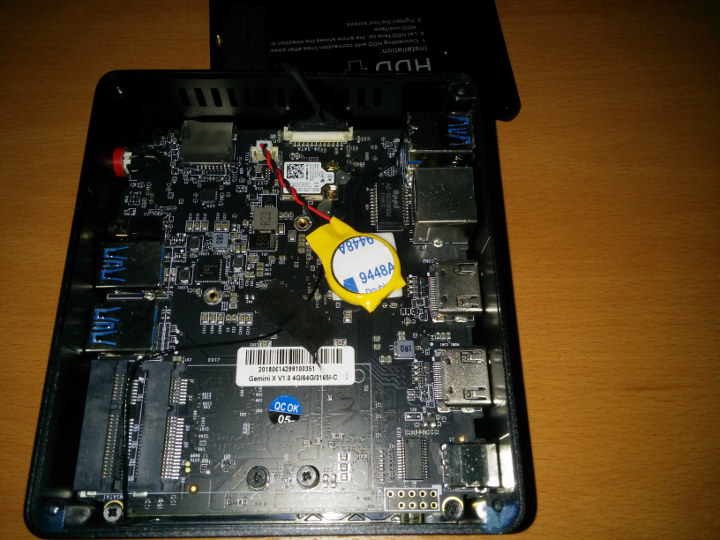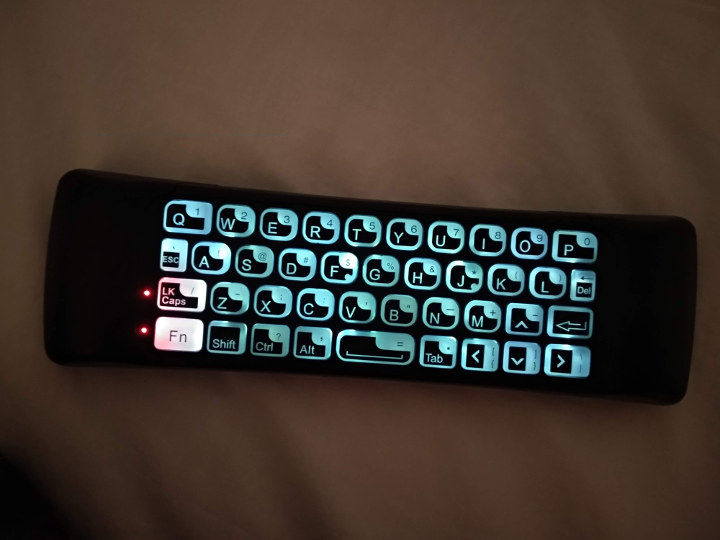There were talks about Hardkernel working on an ODROID x86 board since last year, as the CEO expected to launch such board later in 2017 in an interview published in ODROID magazine. Finally, it took them several iterations and processors considerations before being ready for launch, and ODROID-H2 should become available next month as the first ODROID x86 board. ODROID-H2 will feature an Intel Celeron J4105 Gemini Lake processor, two SO-DIMM slots for memory, two SATA ports and M.2 NVMe slot for storage, two Gigabit Ethernet ports, a mix of USB 3.0 and 2.0 ports, and more. ODROID-H2 board specifications: SoC – Intel Celeron J4105 quad core processor @ up to 2.3 GHz (real frequency) with 12EU Intel UHD Graphics 600 System Memory – Dual-channel Memory DDR4-PC19200 (2400MT/s) supporting up to 32GiB RAM in total Storage – M.2 PCIe 2.0 x4 slot for one NVMe storage, 2x SATA 3.0 ports, […]
TopJoy Falcon Review – A Windows 10 Mini Laptop (Prototype)
The Topjoy Falcon is a mini laptop reminiscent of netbooks and similar to the recent GPD Pocket 2 or One Mix Yoga devices. Marketed as an 8 inch (203mm) pocket-sized computer with the following specification: Intel Pentium Silver N5000 CPU 8G RAM 256G SSD disk 1920*1200 FHD IPS touch screen 6000 mAh battery for up to 8 hours working time 1 x USB A 3.0, 1 x USB Type-C 1 x 3.5mm headphone jack 1 x Mini HDMI port Active cooling 802.11ac WiFi, Bluetooth 4.0 Backlit keyboard Windows 10 Home Weight 550g (1lb 3oz) Fits easily in your pocket Although you would need a large pocket as whilst It is physically small consisting of an approximately 8″ by 5.2” and about 0.7” thick (203mm x 132mm x 18mm) when closed it is in reality too big for the average pocket. It will soon be available on Kickstarter with an early bird price of $399 and an expected retail price of […]
La Frite Amlogic S805X Board Runs Mainline Linux, Goes for $5 and Up (Crowdfunding)
Libre Computer first started with their AML-S905X-CC (aka Le Potato) board powered by Amlogic S905X processor last year, and they’ve since then launched several other boards based on Allwinner or Rockchip processor. But their latest “La Frite” board – also known as AML-S805X-AC – is an even lower cost version of the “Le Potato” board, with an Amlogic S805X processor limited to 1080p60 output and video decoding, a smaller footprint based on the one for Raspberry Pi Model A+, and price starting at just $5 on Kickstarter. AML-S805X-AC “La Frite” board specifications: SoC – Amlogic S805X quad core ARM Cortex-A53 processor @ 1.2 GHz with penta core ARM Mali-450MP GPU @ 650 MHz, and Amlogic Video Engine 10 System Memory – 512 MB or 1GB DDR4 @ 2400 MHz Storage – eMMC module connector, 128 Mb SPI NOR flash Video & Audio Output – HDMI 2.0 port Video Codecs Decoding […]
NanoPi NEO4 is the Cheapest & Smallest RK3399 Board So Far
As you should be well aware the RK3399 SBC market is quite crowded these days, and FriendlyELEC had already released two Rockchip RK3399 boards with NanoPC-T4, and NanoPi M4 boards. But the company has now announced another board – as expected – with NanoPi NEO4, the smallest and cheapest RK3399 board on the market at this point. NanoPi NEO4 board specifications: SoC – Rockchip RK3399 big.LITTLE hexa-core processor with 2x Arm Cortex-A72 @ up to 2.0GHz, 4x Cortex-A53 @ up to 1.5GHz, a Mali-T864 GPU with support OpenGL ES1.1/2.0/3.0/3.1, OpenVG1.1, OpenCL, DX11, and AFBC, and a VPU with 4K VP9 and 4K 10-bit H265/H264 decoding System Memory – 1GB DDR3-1866 Storage – eMMC module socket, micro SD card slot Video & Audio Output – HDMI 2.0a up to 4K @ 60 Hz with HDCP 1.4/2.2 support Camera – 1x 4-lane MIPI-CSI connector for camera up to 13MP Connectivity – Gigabit […]
AAEON UPC-GWS01 is Tiny IoT Gateway Powered by UP Core Board
AAEON’s UP Core is an affordable and compact Intel Atom x5-Z8350 based board that was launched last year on Kickstarter for 69 Euros and up. The company has now integrated the board into at least one of their product with UPC-GWS01, a tiny IoT gateway with WiFi and Bluetooth connectivity, as well as support for optional 3G/4G LTE connectivity via a mini PCIe slot. A carrier board for UP Core also added Ethernet and a DB9 serial port to the setup. AAEON UPC-GWS01 specifications: SoC – Intel Atom x5-Z8350 quad core Cherry Trail processor with Intel HD 400 graphics System Memory – 1GB/ 2GB/ 4GB onboard DDR3L-1600 Storage – 16GB/32GB/64GB eMMC Video and Audio Output – 1x HDMI port Connectivity Gigabit Ethernet via Realtek 8111G WIFI 802.11 b/g/n @ 2.4 GHz (WiFi 4) and Bluetooth 4.0 Optional 3G/4G cellular connectivity via mPCIe socket USB – 1x USB 3.0 host port […]
Beelink X55 Review – An Intel Gemini Lake mini PC Tested with Windows 10 and Linux
The Beelink X55 is very similar in style to Intel’s NUC7PJYH NUC reviewed earlier except that it is not a kit but a fully functional Windows mini PC. It is physically small consisting of an approximately 4.5″ by 4” case about 1¾” tall with a front panel that includes the power button and a couple of USB ports and a headphone jack with the rest of the ports including two HDMI (2.0) ones at the rear: The specifications include: The key highlights are that the Beelink X55 comes a 128GB mSATA SSD with pre-installed Windows 10 Home together with 8GB DDR4 RAM (soldered and is non-expandable) and space plus a connector for an SSD. Starting with a quick look at the hardware information shows it is mostly aligned to the specification but see the note below about the memory: As usual I ran my standard set of benchmarking tools to […]
Beelink X45 Mini PC Review with Windows 10 and Ubuntu 16.04/18.04
The Beelink X45 mini PC is now available, and Lightinthebox.com have provided a unit for review. It is very similar in style to Intel’s latest NUC Windows mini PC, the NUC7CJYSAL reviewed earlier. However it contains an Intel Celeron Processor J4105 SoC which is a quad core processor bursting up to 2.50 GHz together with the Intel UHD Graphics 600 processor that is capable of 4K support at 60Hz. It is physically small consisting of an approximately 4.5″ by 4” case about 1¾” tall with a front panel that includes the power button and a couple of USB ports and a headphone jack with the rest of the ports including two HDMI (2.0) ones at the rear: The specifications include: A key point to note is the Beelink X45 comes with 64GB eMMC with pre-installed Windows 10 Home together with 4GB DDR4 RAM (soldered and is non-expandable) with space and […]
MINIX NEO W2 PC Remote Control Review in Windows 10 and Ubuntu 18.04
MINIX NEO W2 is sold as a Windows 10 remote control with one side acting as an actual remote with shortcuts to useful Windows functions and programs, another side as a keyboard, as well as a motion sensors to use it as an air mouse. I received it with MINIX NEO J50C-4 Windows 10 Pro mini PC, so I tested it today both with Windows 10, and Ubuntu 18.04. Batteries and Backlight I’ve already looked at the package and remote hardware in the NEO post linked above, so let’s get to it by first installing two AAA battery on either side of the keyboard side. A cool feature you’ll immediately noticed is that both sides of the remote control are actually backlight, with Fn and CapsLock key also changing color to red when they are enabled. The backlight is automatically turn off after 4 seconds, but as you can see […]


